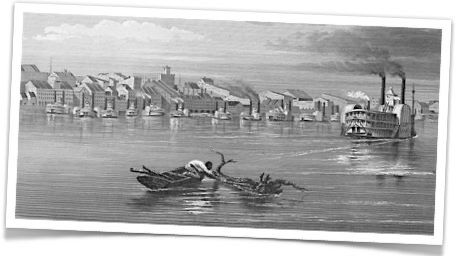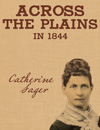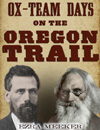St. Louis
ABOVE: St. Louis and Mississippi River. Note all the steamships.
Each year, in the early spring, Oregon-bound travelers from the eastern U.S. converged on St. Louis. It was the last big city most would ever see. The wide Missouri River headed due west from St. Louis, so most loaded their wagons onto steamships for the upstream journey.
The boats were packed full with emigrants, livestock, and dreams.
Emigrant/author Francis Parkman:
"The boat struggled upward for 7 or 8 days against the rapid current of the Missouri, grating upon snags and hanging for two or three hours at a time upon sand bars. In five or six days we began to see signs of the great western movement that then was taking place."
This was by far the easiest leg of the westward journey. But it didn't last long. Two-hundred miles from St. Louis, the Missouri River took a cruel turn to the north. The emigrants were headed west. So they unloaded their wagons from the steamships and began the great overland journey.





